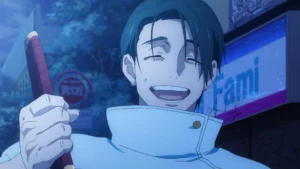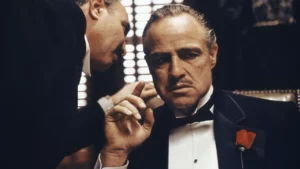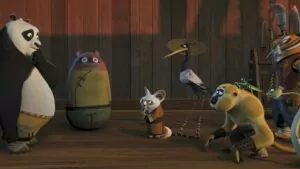
Introduction
Marvel Studios’ Loki returns for its second season with a tantalizing first episode. Season 1 left us with “He Who Remains” and the ominous presence of Kang looming over the TVA. As we dive into Season 2, Episode 1, we’re treated to a plethora of easter eggs, hidden details, and comic references that enrich the storytelling. In this breakdown, we’ll dissect various aspects of the episode, exploring the intricate web of time, identity, and power that defines the Loki series.
Marvel Studios Logo and Updated Opening Sequence
The Marvel Studios logo has become an iconic introduction to MCU content, often featuring an array of key moments from past films. However, in Loki Season 2, viewers were treated to a significant update in this sequence. The logo now features clips from Guardians of the Galaxy Volume 3 and “”He Who Remains””, setting a unique tone for the show. Analyzing this change, we can see that the inclusion of clips from Guardians of the Galaxy Volume 3 hints at a deeper integration of the multiverse into the MCU. This alludes to the broader narrative arc in which Loki plays a pivotal role, bridging various timelines and realities. Moreover, the snippet from “”He Who Remains”” within the opening sequence hints at the impending introduction of Kang the Conqueror, a character who plays a central role in the series.
Statue of Kang and its Symbolism
Throughout Loki, the imposing statue of Kang the Conqueror dominates the TVA’s surroundings. This statue is more than a mere set piece; it is laden with symbolism. Kang, a powerful and enigmatic character, represents the overarching threat and manipulation of time throughout the series. The statue’s design, blending classic and futuristic elements, mirrors Kang’s position as a timeless and formidable entity. Moreover, the statue symbolizes Loki’s own ambitions. Loki seeks not just to overthrow the Time Keepers but to occupy Kang’s very seat. As the series progresses, this ambition shapes Loki’s character arc, and the statue remains a constant reminder of the power he seeks to attain. The statue of Kang serves as a visual and narrative anchor, reminding viewers of the show’s core themes and the ever-present specter of the multiverse.
Time Periods and Timeline Conflicts
Loki immerses viewers in the complexity of multiple time periods within the TVA. Kang’s manipulation of time in the past and its consequences form a central narrative thread. As we delve deeper into this subtopic, it becomes clear that the show brilliantly utilizes temporal conflicts as a driving force. The shifts in the timeline and their consequences not only add layers of suspense but also provide a backdrop against which character development unfolds. Through the chaos of temporal conflicts, Loki explores themes of free will and determinism, highlighting how characters navigate these challenges.
The Role of Mobius and B15
Mobius and B15 emerge as standout characters in Loki, and their evolution is worth examining. Mobius, initially a loyal TVA agent, undergoes a transformation as he uncovers the truth about the organization. On the other hand, B15’s journey from a staunch TVA enforcer to a rebel highlights the agency’s capacity for change and growth. Beyond their individual arcs, their interactions and eventual alliance have significant implications for uncovering the TVA’s secrets. Their dynamic showcases the power of collaboration amidst an organization shrouded in deception and secrecy.
The War Room and Greek Mythology
The introduction of the War Room in Loki is a nod to classical mythology, particularly Greek mythology. The murals within the room are reminiscent of the Three Sisters of Fate, who in Greek mythology controlled destiny by weaving the threads of life. This symbolism reinforces the idea that the Time Keepers and the TVA have positioned themselves as arbiters of fate and guardians of the sacred timeline.
Kang’s Council and the Council of Emperors
The presence of Kang’s Council in the War Room hints at the intricate hierarchy of the TVA and Kang’s own ascent to power. The depiction of five versions of Kang’s head on the wall draws parallels with the Roman tradition of displaying the heads of conquered emperors. This imagery suggests that Kang may have betrayed his own council to seize control of the TVA, similar to his comic book counterpart. Additionally, the slight differences in the armor and headpieces of the Kang variants imply that they may represent distinct versions of Kang from different points in time. This detail adds depth to the character and raises questions about the extent of Kang’s manipulation of the TVA’s timeline.
Kang’s Love and Lonely Path
Kang’s unrequited love and desire for a genuine connection with Ramona add a layer of humanity to the character of “He Who Remains”. This tragic love story hints at Kang’s inner turmoil and his yearning for companionship throughout his countless lifetimes. Ramona’s rejection and the subsequent series of events that led Kang down a darker path are reminiscent of classic tragic narratives. Kang’s evolution from a young Nathaniel Richards to the formidable “He Who Remains” is marked by a cycle of betrayal and loneliness. This backstory provides insight into the complexities of the character, making him more than just a one-dimensional antagonist.
The Temporal Loom and Quantum Realm
The portrayal of the temporal loom as a machine that weaves the threads of time is a visually captivating element of the series. It invokes the imagery of a loom of fate, further emphasizing the TVA’s control over destiny. The concept of the temporal loom provides a tangible representation of time manipulation and the consequences of branching timelines. Additionally, the reference to the quantum realm and probability storms introduces a deeper layer of scientific complexity to the show’s time-travel elements. The spaghetti-like distortion effect is a visual cue for the intricate and unpredictable nature of time within the MCU, drawing parallels with the quantum realm’s molecular level of existence. This connection raises possibilities about the TVA’s true origins and its existence within the quantum realm.
The Chrono Base and Kang’s Origins
The mention of the Chrono Base and its connection to Kang’s origins is a tantalizing clue about the TVA’s deeper history. Kang’s home, Chronopolis, is known to be located in the quantum realm in the comics. This reference hints at a potential link between the TVA and the quantum realm, suggesting that the TVA may operate from within this dimension. Exploring the concept of the Chrono Base could shed light on the origins and purpose of the TVA, offering a richer understanding of its role in the MCU. The inclusion of such references adds layers of intrigue to the show’s narrative, inviting viewers to ponder the mysteries of time and space.
Sylvie’s Surprise Post-Credits McDonald’s Visit
In a surprising post-credits scene in “Loki,” we see Sylvie visiting a McDonald’s in a different timeline. This moment gives us a glimpse of Sylvie’s life after her actions in the series. She seems to be leading a quiet and normal life, making a mundane food choice. This scene raises questions about Sylvie’s future and how it might intersect with other characters. It’s a reminder of the endless possibilities the multiverse offers in the Marvel Cinematic Universe.
Conclusion: The Movie Culture Synopsis
Loki Season 2, Episode 1 continues to explore the complexities of time, identity, and power within the Marvel Cinematic Universe. With a rich tapestry of easter eggs, hidden details, and comic references, the episode sets the stage for a captivating season. As we follow Loki and Sylvie through dual timelines and confront the enigmatic Kang, the TVA’s secrets begin to unravel. The episode leaves us eagerly anticipating the next installment and the intricate web of time that awaits our beloved characters.



